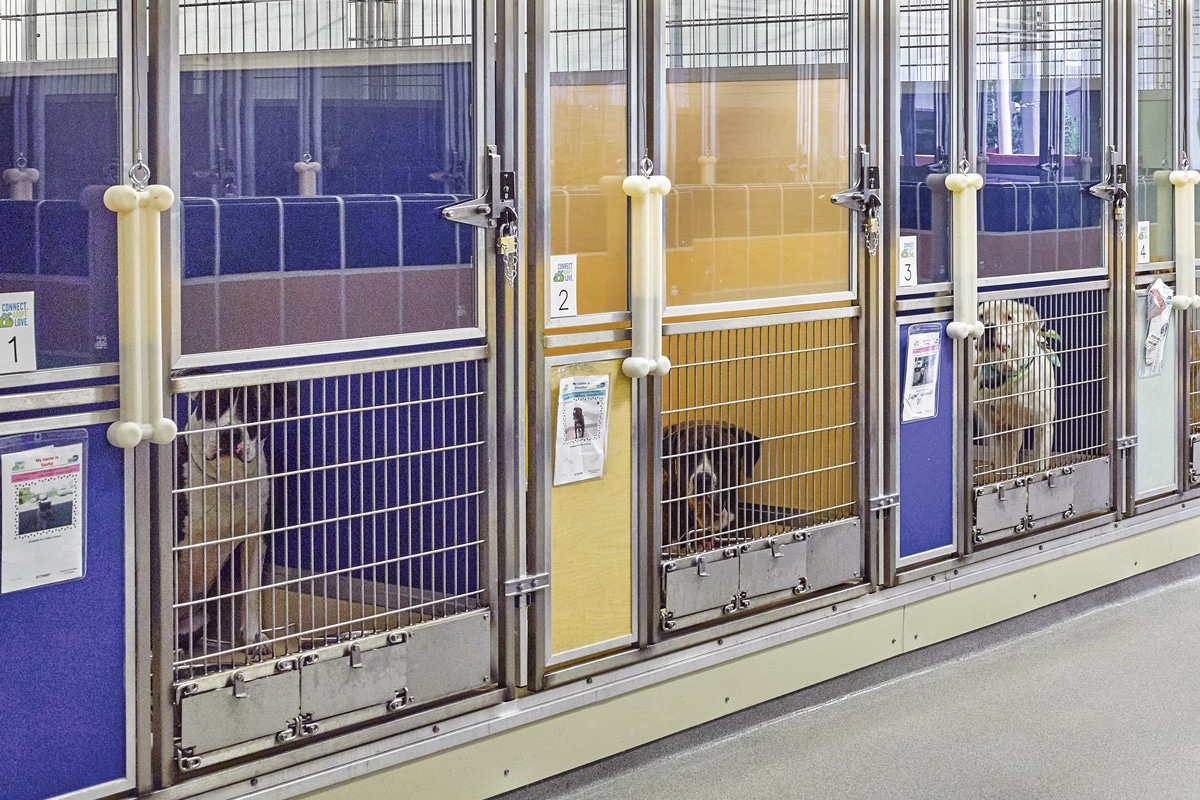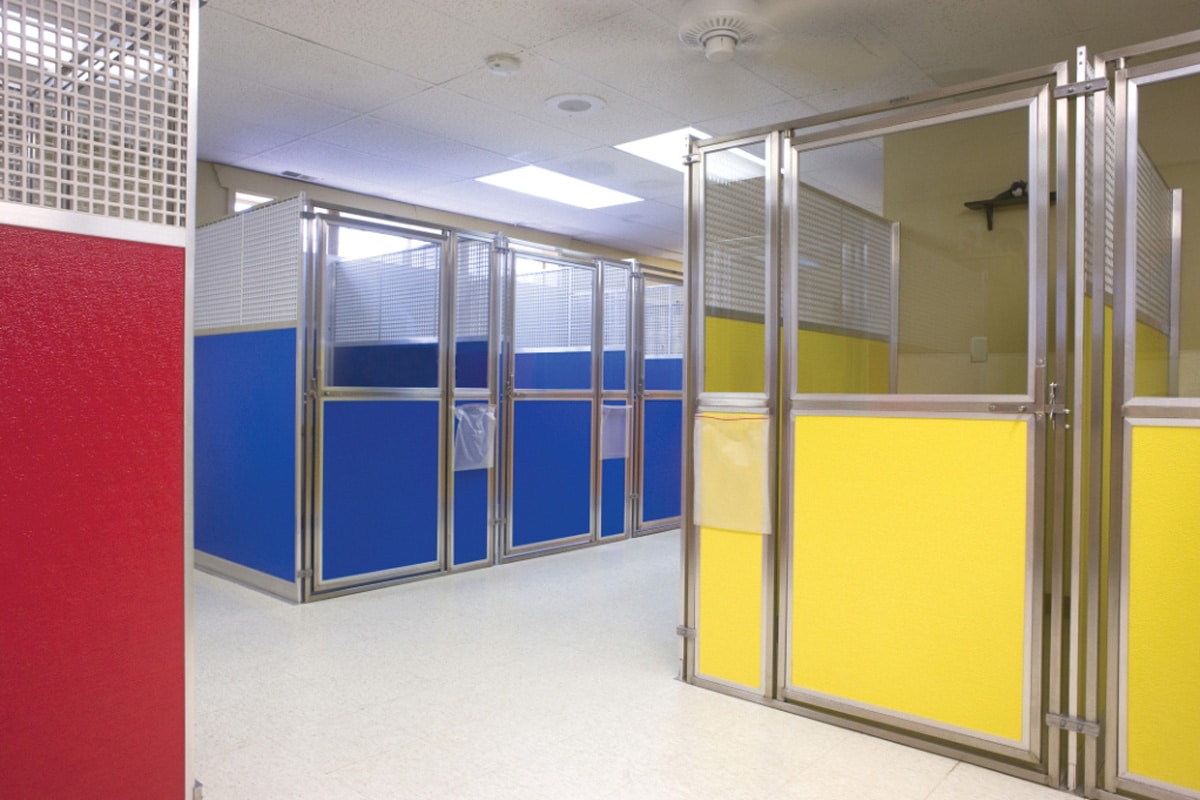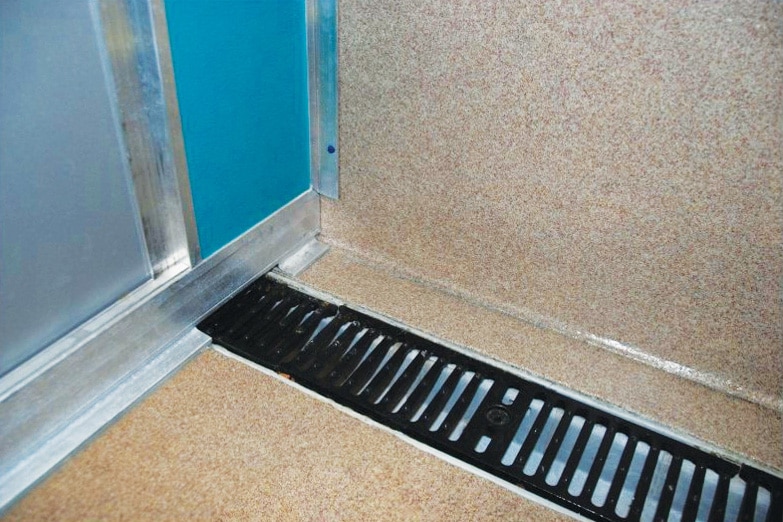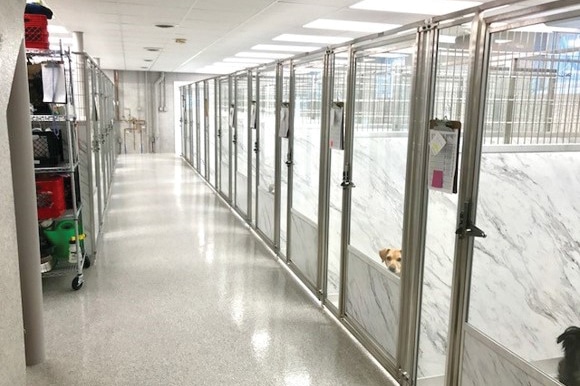
[Photo: Courtesy of Mason Company]
The Mason Company merges beauty and functionality for safe and thoughtful kennel design.
There’s a quote that frequently pops into Greg Taylor’s head when he’s working on kennel design. The Mason Company CEO can’t remember exactly who said it, but in his experience, it’s proven true: “You can tell how far a civilization has advanced by how well it cares for its animals.”
There’s no question times have changed. Since the company began designing and manufacturing animal enclosures in 1892, pet owners have pushed to house their animals in the kinds of inviting, beautiful spaces that even they might want to be in. “Many millennials consider animals their first children,” Taylor says. “The market has moved away from housing a cat in a small stainless steel cube, or putting a dog behind metal bars that look like a prison. The market wants more secure, better, but beautiful housing.”
These are some of the key points to consider when setting out to add kennels to your next project.

[Photos: Courtesy of Mason Company]
1. Size
Not every dog is the same size, so every run shouldn’t be the same either. It’s important to do the proper research before determining the size of kennels for a space and offer options. Often shelter dogs are larger breeds and require larger runs, while dogs at pet resorts are smaller, Taylor says. Design flexibly and you can change kennel size as needed by installing side-to-side transfer doors—allowing one run to turn into two, for instance, to help maximize space. Smart sizing can also help facility owners stretch their facility’s footprint.
Taylor encourages designers to take advantage of vertical space, too—building up rather than out. Smaller enclosures can be stacked, and larger runs can utilize stairs to access upper levels. “There is a lot of wasted space going up to the ceiling. You can double your holding capacity and double your revenue by building up.”

[Photos: Courtesy of Mason Company]
2. Smart Layout
A smart layout is key to getting the most revenue out of a facility and having happy, healthy animals. Positioning dogs so they’re not facing each other—or using plants or other features to block their direct view—will also reduce anxiety and barking. Housing animals in multiple small rooms rather than one large room is also helpful to reduce noise, Taylor says.
The smell and sound of a facility can be the “kiss of death,” Taylor says. “If you walk in and it stinks to high heaven, that’s off-putting to staff, customers, or the general public. If you want to adopt a dog and the facility is deafening, you won’t want to stick around long.” Full-length tempered glass gates and high-side panels make it difficult for animals to interact with humans, which may promote anxious behavior. Incorporating a two-foot gap of wire at the bottom of doors allows dogs to interact and communicate without barking, while also increasing air flow that will reduce odors.

[Photos: Courtesy of Mason Company]
3. Drain Design
The overall health of the animals comes down to the cleaning and drain system. “Dogs don’t use toilets, so things get messy,” Taylor says. “Cleaning is critical in a facility, and it happens all the time.” All that water and harsh chemicals need somewhere to go. Drain type and placement should be a top priority.
Taylor recommends a rear, individually plumbed trench drain that extends along the back of each run. But, more often—due to cost—he sees facilities using a rear continuous trench drain with a sloped floor so all debris can be filtered into the drain and removed. Installing a removable drain cover or swing-up rest bench will guard the drain while allowing for easy access. Pressure wash systems or overhead hoses can help to direct debris to the drain trench. “There is no right or wrong way to do it, just make certain things get cleaned,”
Taylor says.

[Photos: Courtesy of Mason Company]
4. Quality Materials
Consider the type of facility. Animal control facilities will likely take on more aggressive dogs than pet resorts and therefore will need stronger, more durable materials. Stainless steel side panels, concrete blocks with two-part epoxy, or structural glazed tile are
good choices.
Dogs who are less aggressive and more acclimated, like those at a vet’s office, adoption center, or pet resort, may benefit from more aesthetic options. Taylor recommends fiberglass reinforced plastic or Wilsonart panels, both of which come in Fear Free® colors (colors that have been shown to reduce stress in pets). Regardless of the facility type, Taylor suggests all have at least a
couple of stainless steel-paneled runs with top covers for destructive or escape-artist dogs.

